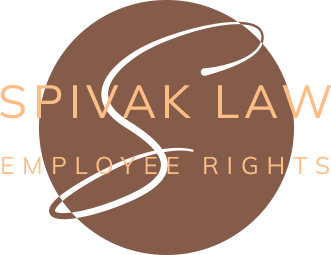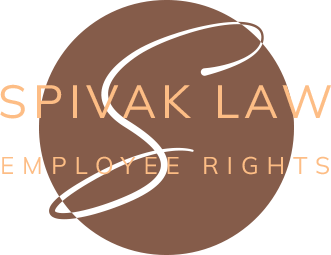
Discrimination Against Latin-Americans
Latinos are a diverse group of people with a rich and varied heritage. Latin America is a vast region encompassing many countries, each with its own distinct culture, history, and traditions. Latinos can trace their ancestry to places like Mexico, Cuba, Puerto Rico, Colombia, Peru, Argentina, and many more. Within these countries, there's a mix of ethnicities, including Indigenous American, European, and African influences. This creates a rich tapestry of heritages and customs within the Latino population. Spanish is the most common language spoken by Latinos, but there's significant variation. Many Latinos speak Indigenous languages like Nahuatl (Mexico) or Quechua (Peru) alongside Spanish, and some Brazilian Latinos speak Portuguese. Latinos can identify with various racial backgrounds, including White, Black, Indigenous, or mixed-race. There's no single racial identity that encompasses all Latinos.
The terms Hispanic, Chicano, and Latino are often used interchangeably though they have different meanings:
- Latino/Latina: Refers to someone from or with ancestry from Latin America. This includes people from Spanish-speaking countries like Mexico, Cuba, Puerto Rico, and many others, as well as Brazil (Portuguese-speaking) and Haiti (French-speaking). It emphasizes geographic origin. Latinx is a gender-neutral term that has emerged in recent years to describe people of Latin American origin or descent. Latinx was created to address the gender binary limitations of Latino/Latina and provide a more inclusive way to refer to the entire population group. It reflects the growing awareness of non-binary gender identities.
- Hispanic: Refers to someone whose heritage is connected to a Spanish-speaking country. This can include people from Spain itself, as well as Latin American countries where Spanish is the dominant language. It emphasizes language and cultural connection to Spain.
- Chicano (masculine form) and Chicana (feminine form) is an ethnic identity for Mexican Americans, specifically those who embrace their Mexican heritage and identify with a non-Anglo self-image.
If you're unsure of someone's preference, it's always best to ask how they identify.
Discrimination against Latinos in the workplace can manifest in various ways, both blatant and subtle, creating a hostile environment and hindering career advancement. Some common forms are:
- Stereotypes and Microaggressions: Latinos may face assumptions about their work ethic, intelligence, or language skills. Casual comments about laziness, lack of education, or accents can create a microaggressive environment. It's a misconception and highly offensive to say Latin Americans are undocumented immigrants or “illegal aliens.” There are millions of Latin Americans living in the United States. The vast majority are legal residents or citizens. People from Latin America come from many countries, each with its own immigration patterns. Generalizing about their legal status is inaccurate.
- Limited Opportunities and the Glass Ceiling: Latinos might be passed over for promotions or training opportunities due to assumptions about their qualifications or lack of "cultural fit." This creates a glass ceiling limiting their career growth.
- Language Barriers: For non-native English speakers, communication difficulties can lead to misunderstandings, exclusion from meetings, or being overlooked for projects. Companies that lack language accessibility can disadvantage Latino employees.
- National Origin Discrimination: Bias against specific Latino nationalities can manifest in hiring practices or workplace interactions. For example, someone from a Spanish-speaking country might face prejudice compared to a Latino from a country with a historically stronger economic relationship with the US.
- Lack of Representation: The absence of Latinos in leadership positions can send a message that they are not valued or seen as capable leaders. This lack of role models can discourage Latino employees from pursuing leadership opportunities.
- Wage Gap: Latinos may be paid less than their white counterparts for the same work, even with similar qualifications and experience. This perpetuates economic inequalities.
These discriminatory practices can have a significant negative impact on Latino employees, leading to:
- Reduced Job Satisfaction and Morale: Feeling ostracized or undervalued can make it difficult to enjoy work and feel like a valued member of the team.
- Increased Stress and Anxiety: Constant microaggressions or a hostile work environment can create significant mental health burdens.
- Lower Productivity: Feeling unwelcome or unsupported can hinder focus and make it difficult to concentrate on work tasks.
- Limited Career Advancement: Unconscious bias and the glass ceiling can restrict opportunities for promotion and leadership roles.
The absence of the following practices in the workplace may allow discrimination against Latinos to persist:
- Diversity and Inclusion Training: Companies can implement training programs to educate employees about unconscious bias and create a more inclusive workplace culture.
- Language Accessibility Programs: Providing translation services, bilingual signage, or language training for managers can help bridge communication gaps.
- Mentorship and Sponsorship Programs: Connecting Latino employees with mentors or sponsors who understand their challenges and can advocate for them is crucial.
- Clear Anti-Discrimination Policies: Having clear policies that prohibit discrimination based on national origin and outline complaint procedures is essential.
- Promote Representation: Actively recruit and promote Latino employees to leadership positions to create role models and a more inclusive environment.
If you have been a victim of racial or ethnic discrimination in the workplace, please call us for help.
If you have been a victim of racial or ethnic discrimination, please call us for help.

Types of Employment Law cases we take
Contact The Spivak Law Firm Today
.2302071229196.jpg)

